
Sicilian cannoli (Cannoli siciliani)
I have kept this recipe in the store for a while before deciding to publish it; I wanted to get things right and some research was necessary. Sicilian cannoli (cannoli siciliani) is one of the most classic desserts from Sicily and every Sicilian family who emigrated abroad in the early 1900’s, took great care to have the recipe in their pocket! Wherever you go in the world, if you find a Sicilian family, then you can be sure they know how to make cannoli. During my research, I came across many variations on the theme, as always happens in Italy. Many times, when I published my recipes, I told people that in Italy the same recipe could change from province to province, town to town and even from civic number to civic number; that’s Italy, we cannot help adapting recipes! However, here I will give you some background information about the cannoli and then the recipe, which I believe to be one of the closest to the Sicilian tradition. In the past, the cannoli were made during the time of carnival (in the same way in North Italy people make frittelle di carnevale), but very soon the cannoli took a more commercial approach and nowadays you can find them anywhere in Sicily, all year round. Cannoli also come in different sizes; some are really huge and probably one of them is enough to fill you up, others comes in a medium size (like the ones I made for this recipe) and in some pastry shops you can even find a very small version, I would say morsel size. Traditionally, the cannoli filling is made using fresh sheep milk ricotta cheese, mixed with candies and other ingredients (see the recipe), but you might have some problem finding sheep milk ricotta because it is not a very common thing to find in the supermarket. If you are lucky enough to have a supplier of sheep milk ricotta, then buy it, otherwise buy the more common cow milk ricotta which will deliver a milder flavour. For those who don’t like the cheesy taste of the ricotta, then you might try a different filling like ice cream (really delicious) or creme patissiere. About the dough to make the cannoli shells (scorze), originally it was made mixing flour with “mosto cotto” (cooked grape must) or alternatively dry white wine. The use of marsala wine came only later in these modern times, when it was made economically more available and people could afford to buy it. To fry the cannoli shells, in Sicily there are many people still using a piece of cane, where you wrap the dough disc around. If you cannot get these pieces of canes, then use metal cannoli tubes, as I did. These are available on the internet and they are roughly 12 cm long with a diameter of 2.5-3 cm. Now, last but not least, the rule of thumb is to keep the cannoli filling in the fridge and to fill the cannoli shorlty before consumption otherwise the shells will become soggy. Empty shells can keep well for 2 or 3 days if you keep them in a tin box like you may do for biscuits. Having said so, now let’s start to make this delicious dessert on our own.Note: traditionally the cannoli shells were fried in pork lard, but nowadays it is more convenient (and less messy) to use common frying oils like groundnut or vegetable oil. The only recommendation I have, if using groundnut oil, is to check that nobody is allergic to it.
Equip your kitchen – Available at Amazon now
Clicking on equipment pictures takes you to Amazon where you can buy the items. We get a small revenue share of anything you buy which helps keep the site running.
Ingredients
Ingredients for the cannoli shells (Metric & Imperial measurements):
- 300 grams (11 oz) Plain flour
- 20 grams (3/4 oz) Caster sugar
- 20 grams (3/4 oz) Pork lard
- 1 tsp Cocoa powder
- 1/2 tsp Ground coffee (alternatively, use a pinch of cinnamon)
- A pinch of salt
- 160 ml (slightly more than 1/4 pint) Dry white wine
- 1 Egg white (for brushing)
Ingredients for the filling (Metric & Imperial measurements):
- 700 grams (1 1/2 lb) Sheep milk ricotta (alternatively, use cow milk ricotta)
- 275 grams (10 oz) Icing sugar + some extra for dusting
- 75 grams (3 oz) Mixed candied citrus peel
- 75 grams (3 oz) Candied cherries
- 75 grams (3 oz) 70% Dark chocolate
- 25 grams (1 oz) Whole shelled pistachios (alternatively, use ground pistachios)
- 2 litre Groundnut oil for frying (alternatively use vegetable oil)
Instructions
- Sieve the flour, together with a pinch of salt, the cocoa powder and the ground coffee.
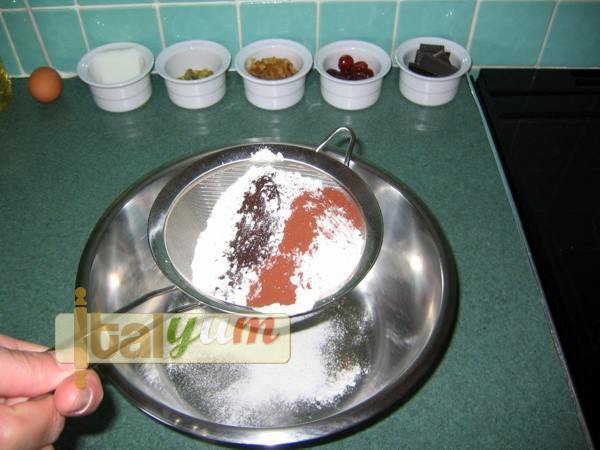
- Add the caster sugar.
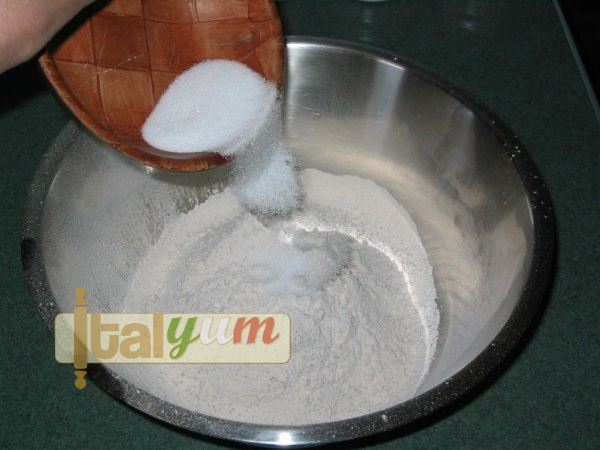
- Rub in the lard, so that it is evenly distributed within the flour.
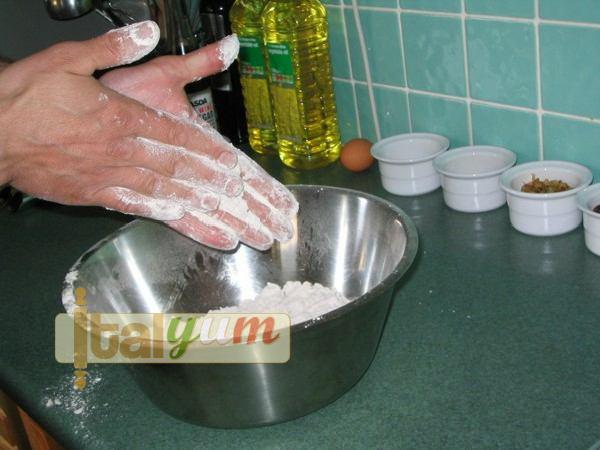
- Add the wine, a little at a time while stirring with the wooden spoon. For this recipe I have used exactly 160 ml of wine, but depending on the flour you are going to use, you may need a bit less or a little bit more.
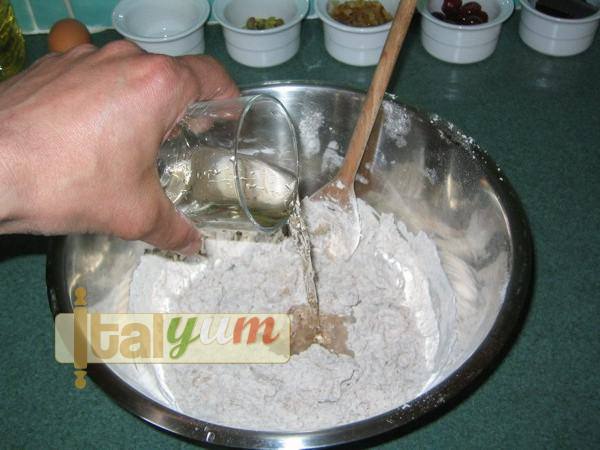
- After the initial stirring with the wooden spoon, transfer the dough onto a working surface and knead until you achieve a smooth and elastic consistency (I would say, very similar to pasta dough).

- This is the dough ball after 5 minutes kneading.
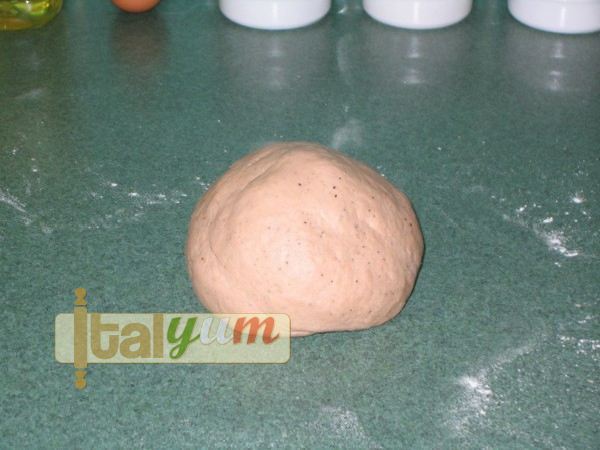
- Wrap the ball with cling film and put it in the fridge for 30-40 minutes.
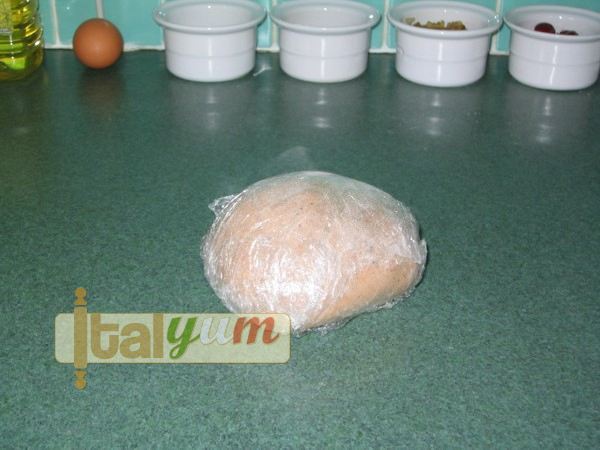
- Meanwhile, we prepare the cannoli filling. You can pass all your ricotta cheese through a wide mesh sieve (with the help of the wooden spoon) or, as I did, through a mouli.
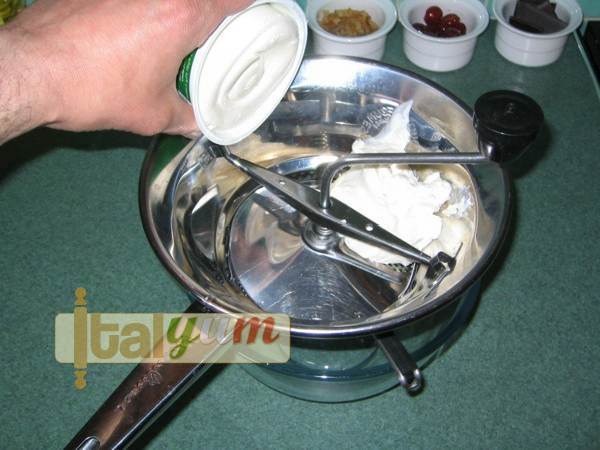
- Place the mouli over a large bowl, so that you can collect all the processed ricotta cheese passing through the bottom grating disc.
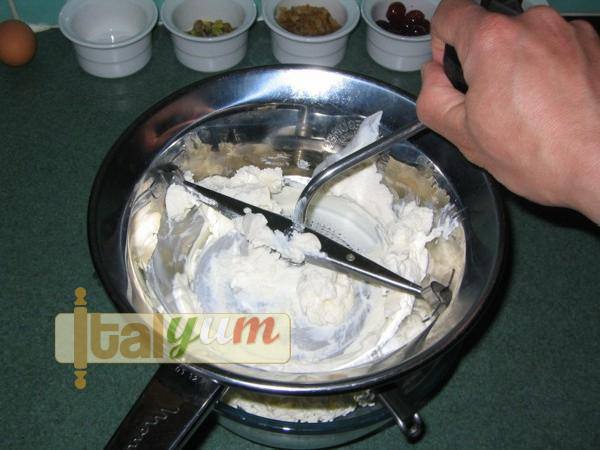
- Then, add 275 g (9 1/2 ounces) of icing sugar.
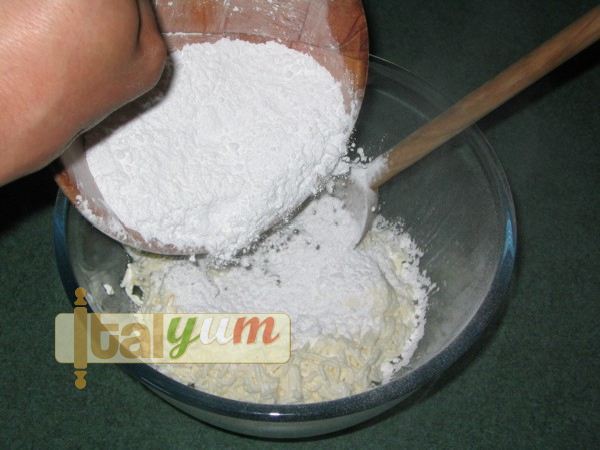
- Combine the ricotta and sugar by giving the mixture a good stir.

- Add the candied citrus peel and the chocolate. Chocolate should be chopped, so that you have many little pieces roughly of the dimension 2 x 2 mm (1/16" x 1/16"). Do not reduce the chocolate into fine powder, otherwise the whole mixture will become brown and it will not look nice when we will complete the cannoli with the final decoration.
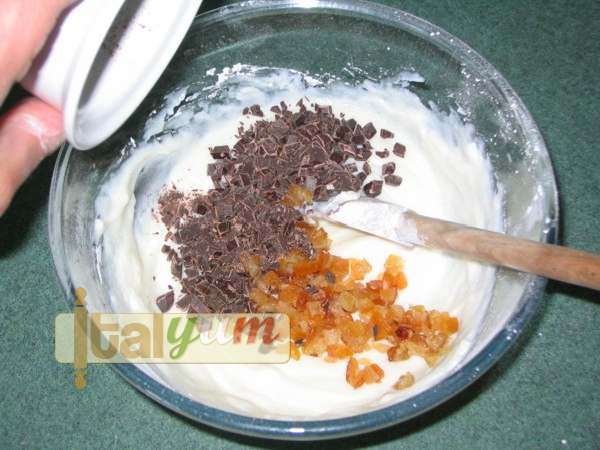
- Give the mixture a good stir.
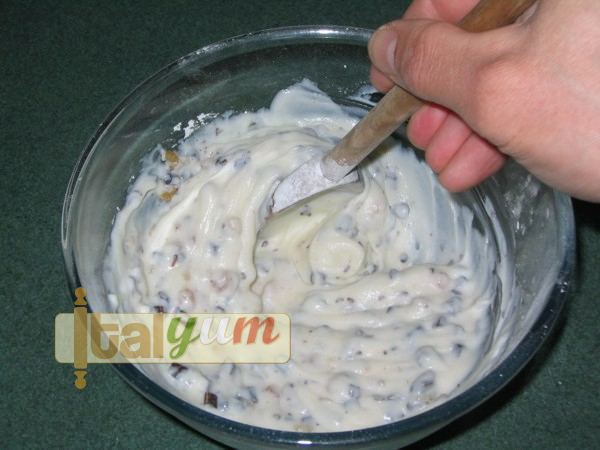
- Cover the bowl with cling film and place it in the fridge until later, when it is time to fill the cannoli.
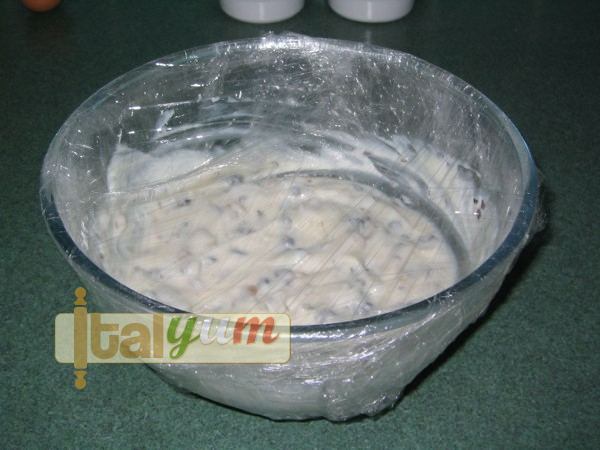
- Now, we start to make the cannoli shells. A pasta machine is ideal for the job because you can reduce the dough in 2 mm (1/16") thick sheets in a matter of few minutes. Alternatively, use a rolling pin.
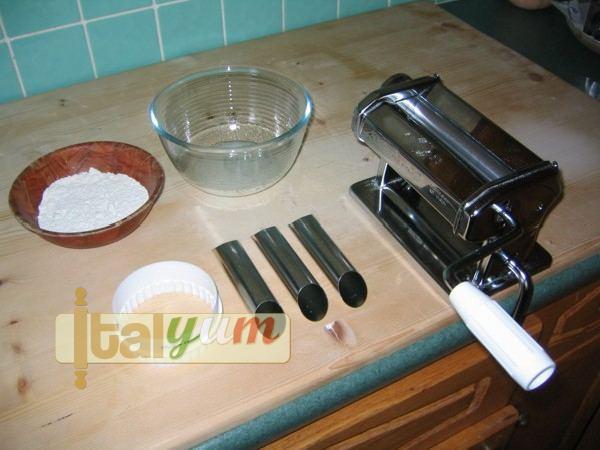
- Divide the dough on for equal parts.
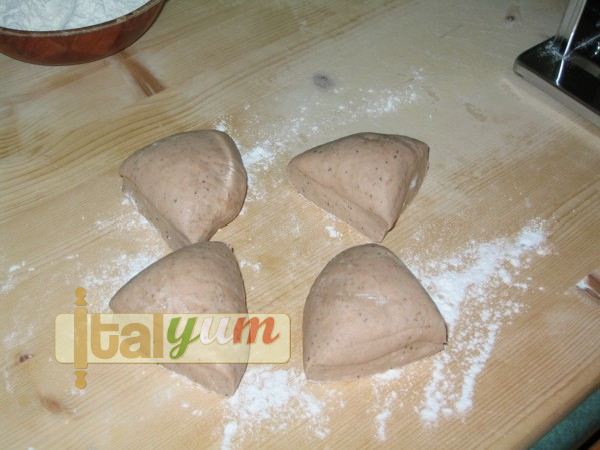
- Pass each dough through the pasta machine roller, starting from the wider settings and keep going until you reach a 2 mm (1/16") thickness (with my machine I stopped at gauge 3). Remember to dust the dough with a bit of flour when passing it through the rollers, otherwise it will stick to them.
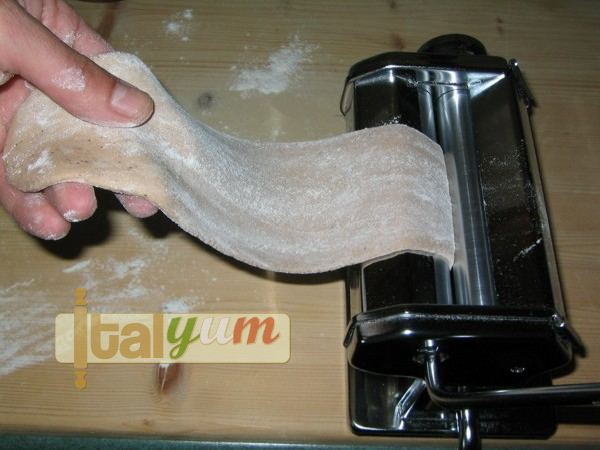
- Lay the dough sheets over a working surface.
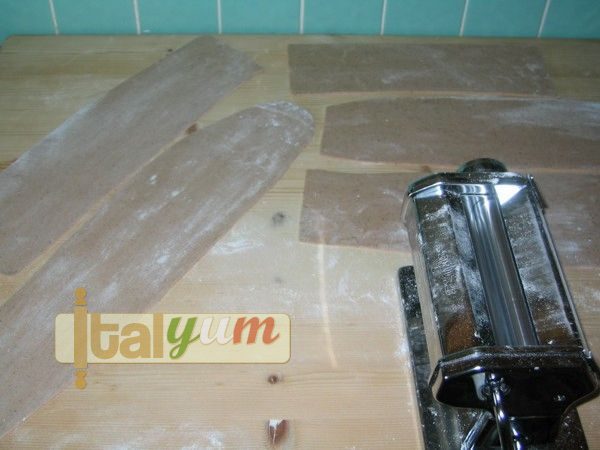
- Take an 88 mm diameter cookie cutter (3 1/2"); use its plain side. Dip it in the flour (it will give a neat cut) and proceed to the next step.
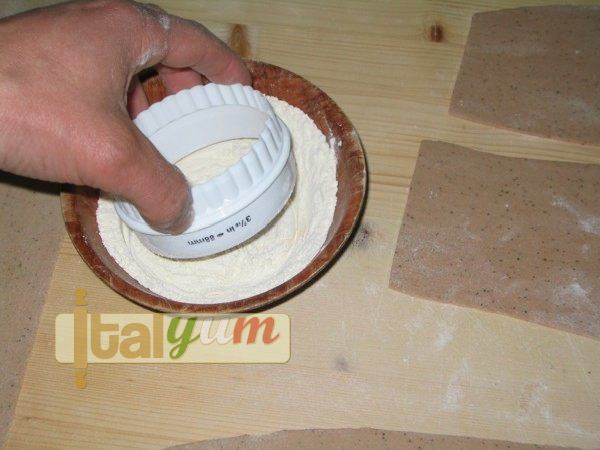
- Cut as many discs as you can. Do not throw the left over sheet, but re-knead it and pass it again through the pasta machine to make more sheets.

- With 300 g (10 1/2 ounces) of flour I managed to make 35 discs.
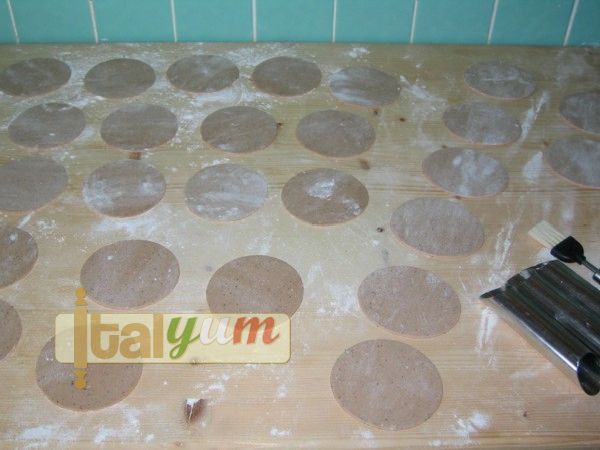
- Take the cannoli tubes and coat their external side with a little oil or lard. You need to do it only once, at the start, because after they will be lubricated anyway by the oil during the frying stage.
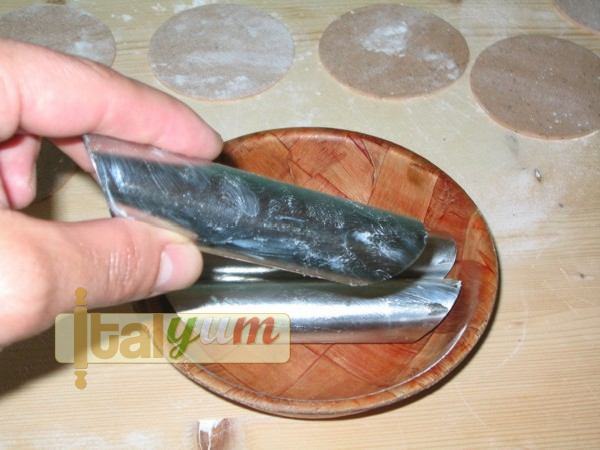
- The discs should be wrapped around the cannoli tubes with the extremities overlapping a bit. If the extremities are not overlapping, then gently press the discs with a rolling pin, so that they will have an oval shape. This way the extremities will easily overlap.
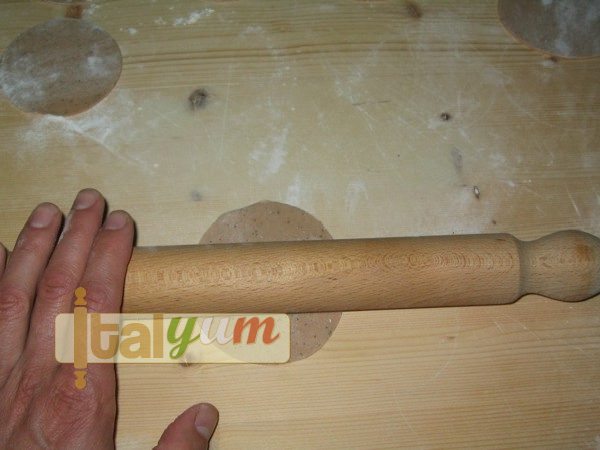
- Place the tube in the centre of the disc.

- Brush a little of egg white on one side of the disc and then bring the other side of the disc over, so that they stick together. Also, gently press the overlapped area with your finger so that the two parts are well joined together.
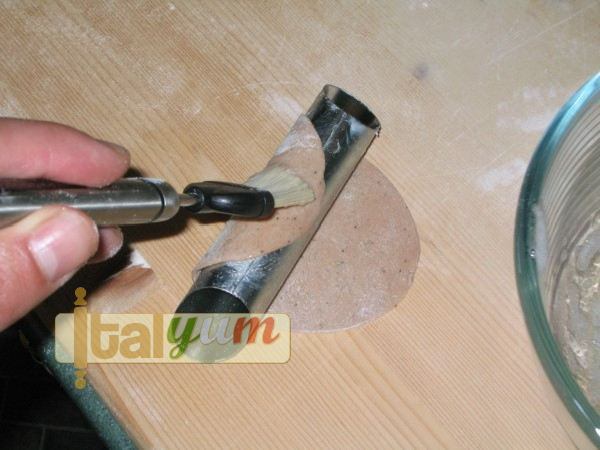
- With three cannoli tubes I managed to fry all the shells (ideally you should fry two shells at a time).
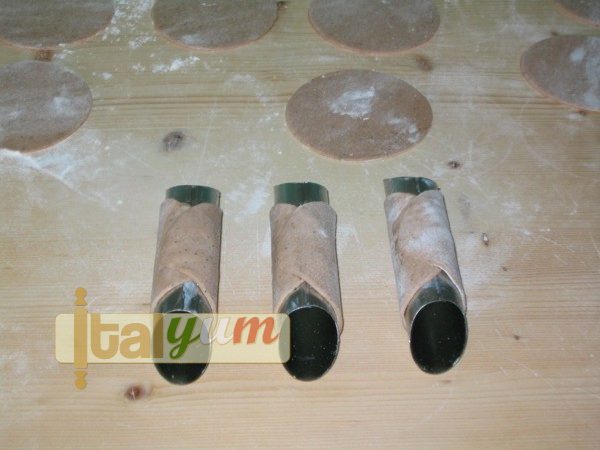
- Heat the oil until it reaches 180°C (355°F).
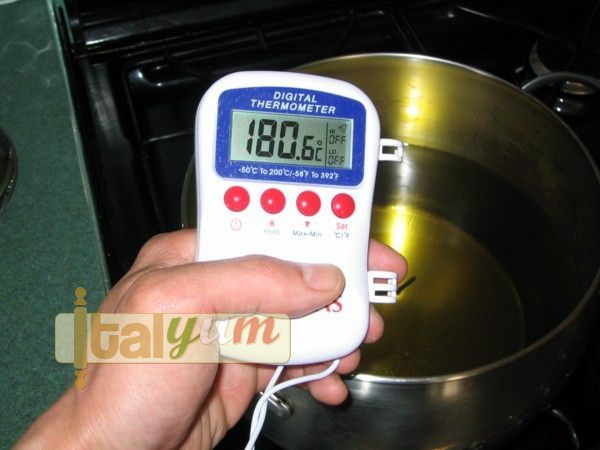
- Now we fry the cannoli shells.
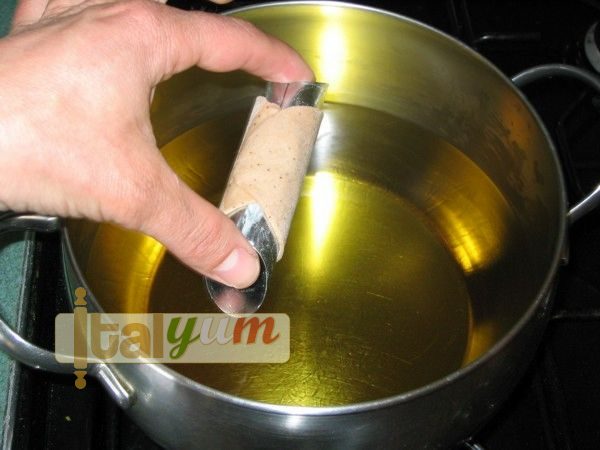
- If you manage to keep the temperature of the oil around 180°C (355°F), it should not take more than 2 – 2 1/2 minutes to achieve a nice golden brown colour.
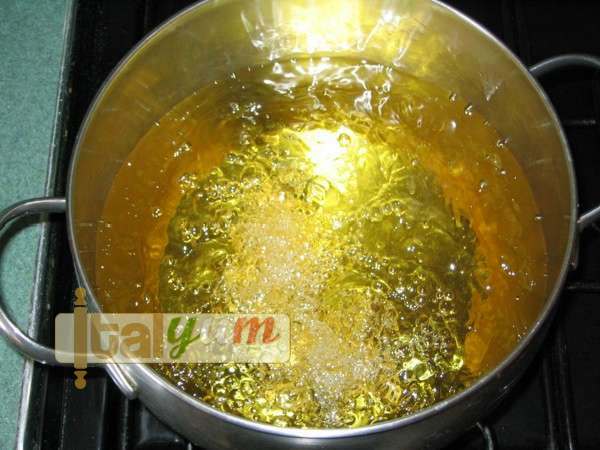
- Once they are ready, take the cannoli shells out of the pan.

- Place them onto kitchen paper to absorb the oil in excess.

- Squeeze the tubes with one hand and with the other push the cannoli shells out. The tubes are open all along their length so that they act like a spring when you squeeze them. Here, you may need a kitchen towel or gloves to protect your fingers because the tubes will be very hot.
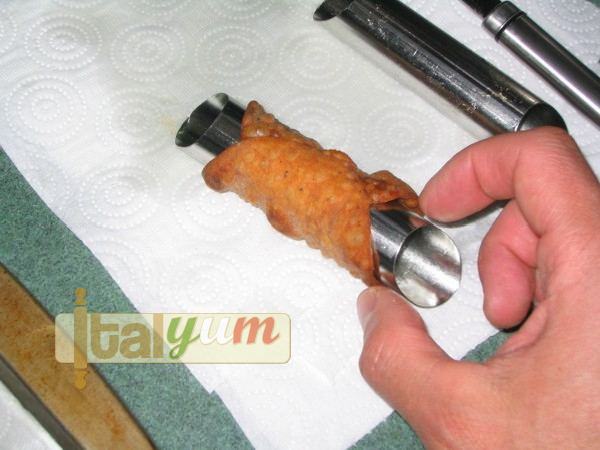
- Repeat the procedure until you have fried all the discs.

- As I wrote in the introduction, fill the cannoly shorlty before consumption otherwise the shells would become soggy.

- Use the candied cherries and the pistachios to decorate your cannoli and finally, dust them with icing sugar.Enjoy this special treat with a nice cup of Italian expresso coffee!

Nutrition
Calories: 650kcal
Tried this recipe?Let us know how it was!




One comment